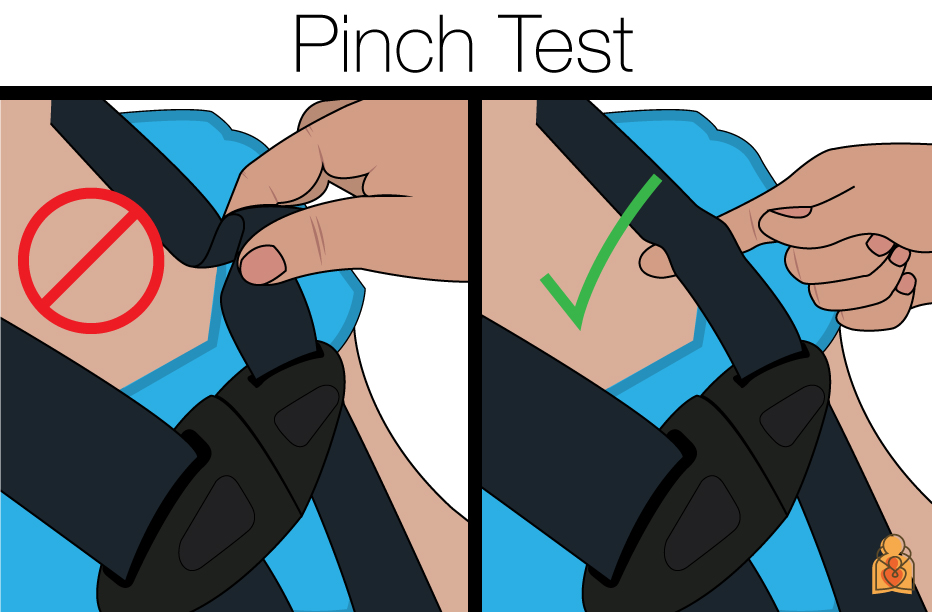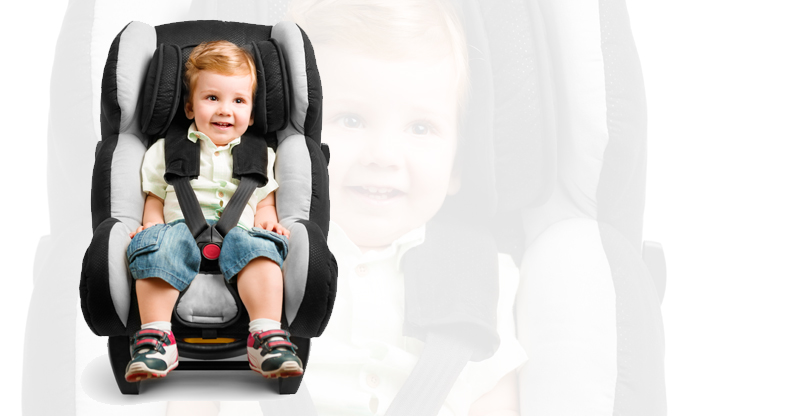While I’ve always known how important car seats are to the safety of our little ones, I didn’t realize how many questions I had about them until I found myself struggling to install one when I was nine months pregnant! There are ones for newborns and ones for older children. Should I buy the one that stays in the car or is it better to click? Some are simple, others are packed with features, and boy are they okay for their price range! Should I install it on the passenger side, driver’s side or in the middle? There are laws about backwards and forwards – how on earth do I know if I actually have it installed? Here are some questions I answered.
What is the law?
The Pennsylvania Child Passenger Safety Act was updated last August. Children under the age of two must remain in the car seat facing backwards. It is recommended that once children are two years or older, they should remain facing rearward until they exceed the height and/or weight limits set by the car seat manufacturer.
Why post?
Frontal collisions are the most common type of automobile accident. When a child is seated in a forward-facing car seat (FFCS) during a frontal collision, the child can be thrown forward, pushing the child in the opposite direction of the car seat, risking injury or even death. When a child sits in a rear-facing car seat (RFCS) during a frontal crash, the child is pushed back into the car seat instead of away from it. In short, having the car seat face rearward supports the child against forward motion caused by a frontal collision.
In 2007, a study used National Highway Traffic Safety Administration data to compare the risk of injury in RFCS and FFCS for children under two years of age. The study used 15 years of data from 1988 to 2003. The findings concluded that, “Regardless of the age group considered, the risk of injury resulting from the use of RFCS was lower than that of crashes in all directions using FFCS.” (Henry, B et al.)
How do I choose a seat?
When choosing a car seat, consider your child’s height and weight. For safety reasons, car seat manufacturers set height and weight limits on seats, which vary by seat type. Some seats are specially designed for babies, while others can be converted according to the stage of growth.
Some seats remain in the vehicle at all times, while others have a base that is fixed to the vehicle while allowing the seat to be lifted. This is often the case with infant car seats. Some removable car seats may offer more options, such as locking in a free stroller, for which many parents may be willing to pay extra.
While a web search is great for narrowing down your options, there are some car seats you might want to check out for yourself. They vary in color, fabric and how they are installed in the vehicle. You may be able to wipe some down to clean, while others have covers that you can remove and throw in the washing machine. Some car seats are installed using your vehicle’s seat belts, while others have the option of a LATCH system, clips that lock to specific anchor points on your vehicle. Not all vehicles are equipped with a LATCH system, so be sure to check your owner’s manual to see if your vehicle is equipped with a LATCH system, or if a specific type of car seat is recommended for your vehicle.
Find additional resources here to help you choose.
How do I know if my car seat is installed correctly?
Start with your car’s owner’s manual, which may suggest where to place the car seats. With some vehicles, it is not safe to place a car seat in the middle of a row, depending on whether the seat is flush or raised. Your owner’s manual will also provide any other advice specific to your vehicle. While the middle of the rear seat is a safe place for a car seat, I found out while reading the owner’s manual that this isn’t the case with my vehicle because the middle seat is higher than the rest. You will also find out if your vehicle has a LATCH system and where the anchor points are.
Next, carefully read and follow the instructions provided by the car seat manufacturer. Some seats should be placed in specific positions, depending on whether they are rear-facing or forward-facing. Some seats have level indicators. The instruction manual will guide you through the installation.
There are also many specific scenarios, such as where to install a car seat in a pickup with only one row of seats, or where to install a third car seat in a sedan that already has two other car seats installed.
Whether you’re in one of these situations or just want extra peace of mind, find your local car seat inspection station hereor here。 Trained technicians are available to provide educational services to ensure the seat is installed correctly. You can use one of the links below to find an event or checkpoint. You can also contact your local emergency medical services, fire or police department to find out if they offer inspections or security incidents. My local police department will deliver checks by appointment on certain days of the week.
Video resources are also available from National Highway Traffic Safety Administration.
How do I know if my child is fastened correctly?
- Carefully follow the instructions provided by the car seat manufacturer. Make sure your seat belt is fastened and snug. Determining this was one of the things I found most difficult until I learned about “clamp testing”.
 image from Healthy Kids Network
image from Healthy Kids Network - Make sure the seat belt is at the correct position or height behind the shoulders. This varies based on the size of your child.
- Make sure the chest clip is at armpit level.
- Do not dress children in heavy clothing, such as winter jackets or snow suits. This prevents the seat belts from being properly secured and your child could actually slide over them in a crash. Likewise, you can visit checkpoints to be educated about properly protecting your child.Check Children’s Hospital of Pittsburgh Car Seat Inspection Scheduleor one PA Techs Assembly Station to know more information.
What about recalls?
Car seats have expiration dates and can also be recalled for safety reasons. Never use a car seat that does not include a manufacturer’s manual.You can call the National Highway Traffic Safety Administration or visit their website.
car seat accessories
Car seat accessories range from mirrors and toys to fluffy shoulder pads and headrests. However, their use is not recommended. The extra padding or padding provided by the car seat manufacturer is the only accessory that has been crash tested for that particular seat. Adding other accessories could prevent the seat belt from staying in place, or could injure the child if the seat belt comes off in an accident.
If you’re concerned about how your child will fit in the car seat, seek education from a certified technician.
UPMC Children’s Hospital Car Seat Guide
source:
Car Seats: Family Information. (nd). Retrieved September 26, 2016 from https://www.healthychildren.org/English/safety-prevention/on-the-go/pages/Car-Safety-Seats-Information-for-Families.aspx?gclid=CKPmrdSgs88CFYEehgod0roNWg
Henry, B., Sherwood, CP, Crandall, JR, Kent, RW, Vaca, FE, Arbogast, KB, and Bull, MJ (2007). Child Car Seats: Rear-facing for best protection. Retrieved September 26, 2016 from https://www.ncbi.nlm.nih.gov/pmc/articles/PMC2598309/
Rear-facing infant and toddler car seats. (nd). Retrieved September 26, 2016 from https://www.healthychildren.org/English/safety-prevention/on-the-go/Pages/Rear-Facing-Car-Seats-for-Infants-Toddlers.aspx
Backwards: why it’s beneficial. (nd). Retrieved September 26, 2016 from http://www.preventinjury.org/Child-Passenger-Safety/About-Child-Safety-Seats/Rear-Facing-Why-It-s-Beneficial


